
IUCN STATUS
Endangered
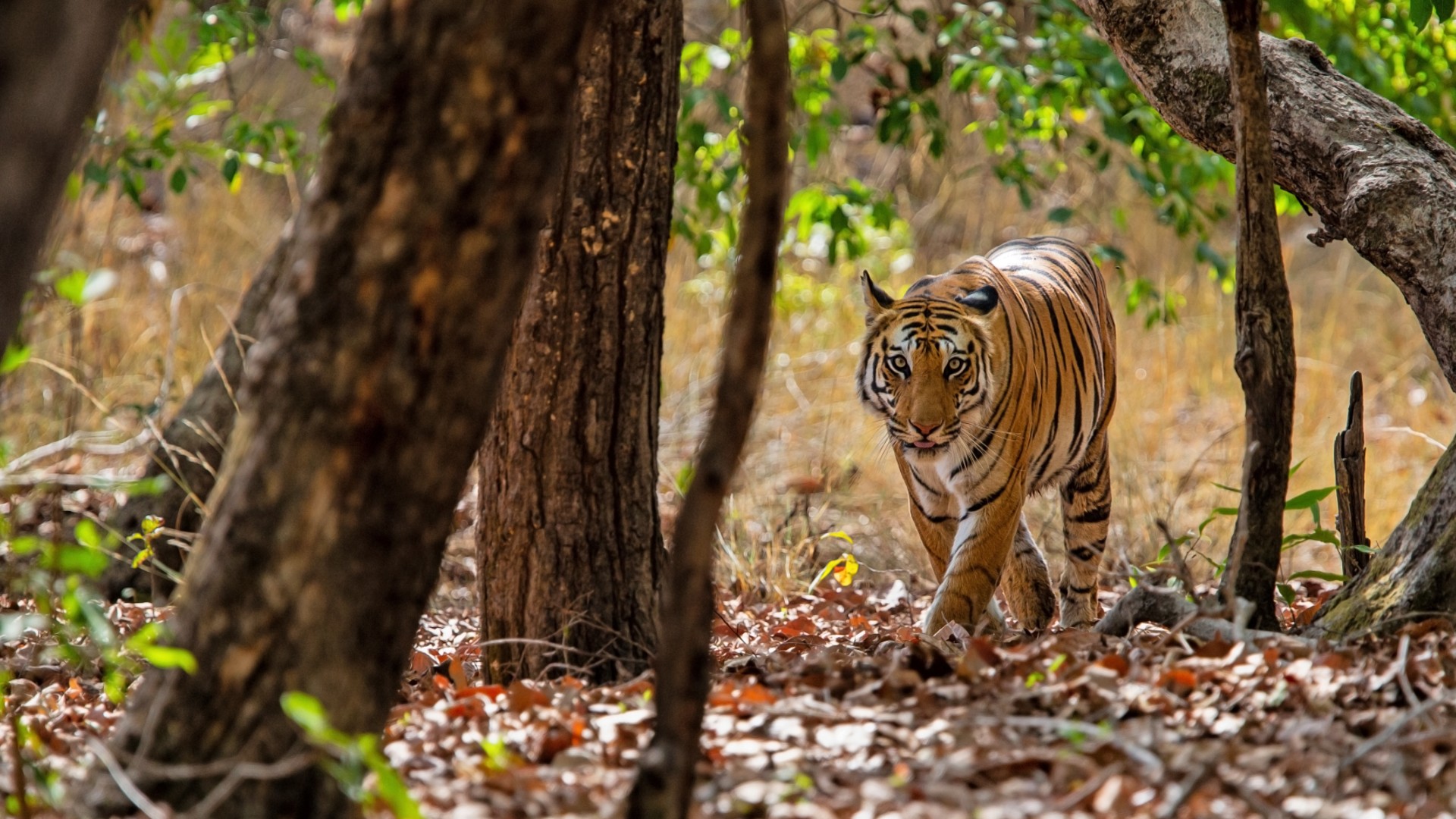
Panthera tigris
As top predators, they help to maintain herbivore populations, reducing disease and preventing overgrazing. As they need so much space, protecting tigers and their habitats means that we can protect many other species.

Endangered

Global: ~5,660 individuals (estimate by Global Tiger Forum, 2024). Best estimate of mature individuals ~3,140 (IUCN, 2021).
India: ~3,682 tigers are found in India; according to the National Tiger Conservation Authority’s Status of Tigers: Co-Predators and Prey in India 2022 report.

Carnivorous

Found mainly in the forests of Asia, from the freezing boreal forests to hot and humid tropical rainforests

Across a dozen countries in Asia, with the majority found in India and Russia

Weight: 100-260kg, length: 1.5-3m, shoulder height: 80-100cm

Poaching and the illegal wildlife trade, habitat loss, human-tiger conflict, captivity

The stripes of a tiger are completely unique to each individual and can be used to identify them, and their roar can be heard as far as three kilometres away!
Tigers are the largest cat on earth. There are six surviving subspecies, the Siberian tiger, the Southern China tiger (although possibly extinct in the wild), the Indochinese tiger, the Malayan tiger, the Sumatran tiger and the Bengal tiger.
They are agile, with flexible bodies designed for running, jumping and climbing. Heavily muscled forelimbs, retractable claws, powerful jaws, sharp teeth and acute senses make them incredible hunters.
Tigers have a reddish-orange to yellow-ochre coat with a white belly and black stripes and their distinctive markings blend into the colours and shadows of their habitat, providing excellent camouflage.
Although tiger size varies widely between subspecies and where they live, male tigers tend to be much larger than females.

Tiger in India © Yashvardhan Dalmia
Tigers are found in temperate forests, tropical rainforests, grasslands and coastal to mountain elevations in small areas across Asia. Due to their large space requirements, they typically avoid areas which are split into smaller, separate areas and/or are dominated by people.
Tigers are generally solitary, living and hunting alone. The size of their territory varies depending on the abundance of prey. Some tiger species, such as the Siberian tiger, have extremely large territories of up to 2,000km. While female and male tigers may have overlapping territories, males do not share territory with other males.
Tigers use scent to communicate – they spray urine and rub scent on trees and bushes to inform other cats of their whereabouts and to mark their territory.
Females give birth to a litter of two or three cubs after a 90 – 110 day pregnancy. Cubs spend a lot of time playing, during which they learn how to stalk, fight and communicate. Adults may also show play behaviours with cubs. Cubs learn to hunt and kill from around six months of age but remain dependent on their mother for at least 15 months, after which time they will leave to find their own territory.
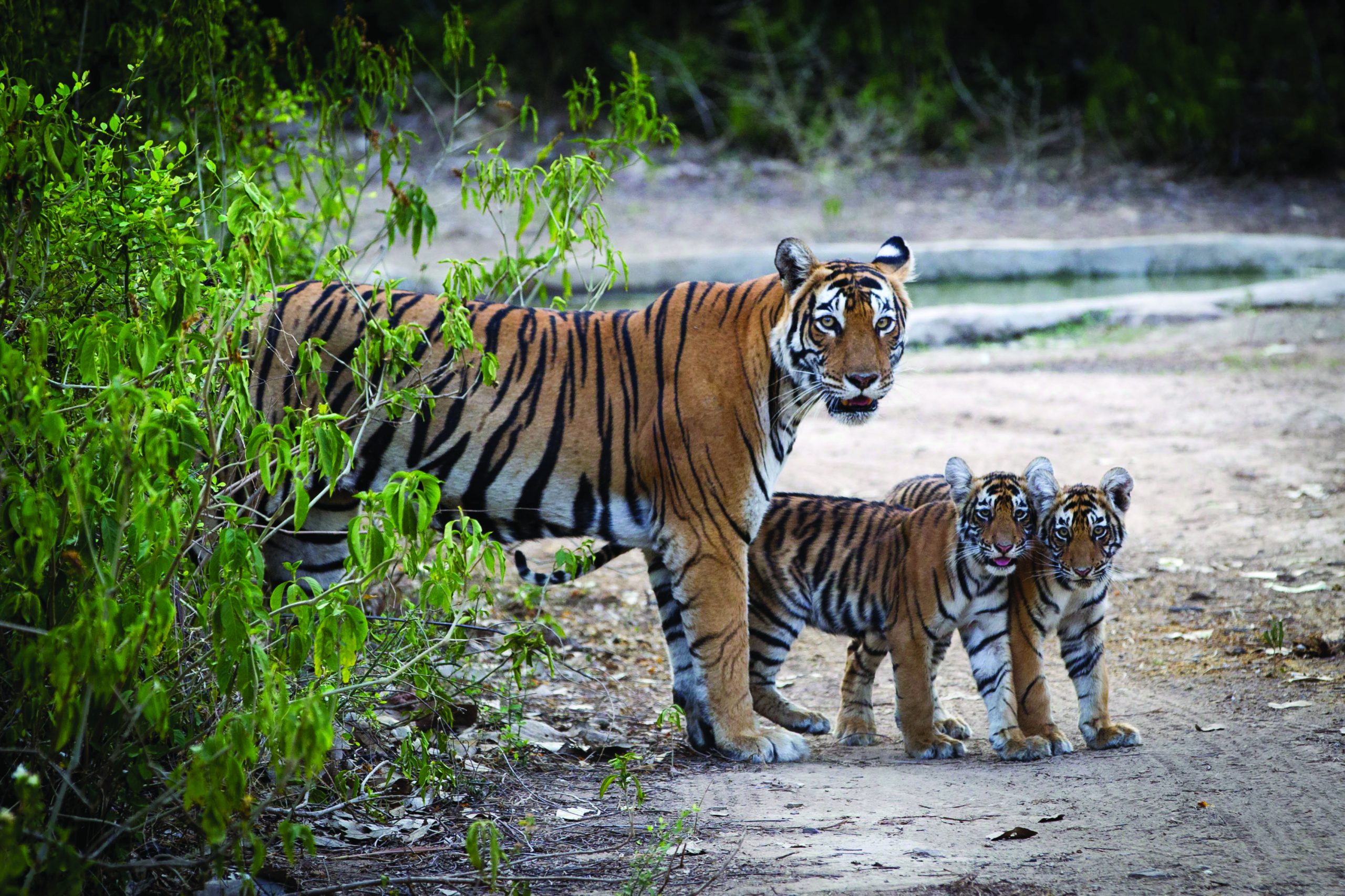
Tiger and cubs © tigersintheforest.com
Tiger populations are on the brink of extinction in many countries in Southeast Asia, due, largely, to habitat loss. The reasons for tiger habitat loss include rapid human population expansion and the related increases in mining, logging, deforestation, farming, palm oil plantations, settlements, roads and railways.
As tiger habitats have split and separated, inbreeding has become more common, which also contributes to the decline in numbers.
Throughout their range, tigers find themselves in conflict with farmers that persecute them for killing their livestock. People have also been attacked and killed by tigers, which has further fuelled retaliatory killings and low tolerance for the animals.
Many large tracts of forest are now empty of wild prey and livestock are, increasingly, competing with tigers and their prey for habitat, further driving tiger numbers down.
Tiger poaching and the exploitation of tigers in tiger farms are significant threats to tigers. Tigers are being poached to use their skins as luxury rugs and home décor, and for their bones which are used to make traditional Asian medicines and health tonics.
Indiscriminate snaring and poison traps, often set for hunting small animals for bushmeat, inevitably end up injuring or killing tigers, contributing to their decline.
Tigers are also exploited and abused in captivity – in circuses, zoos, tiger farms and in people’s private collections of wild animals as pets. The captive tiger population cannot live healthy and natural lives, with the average zoo enclosure 40,000 times smaller than the tiger’s natural habitat.
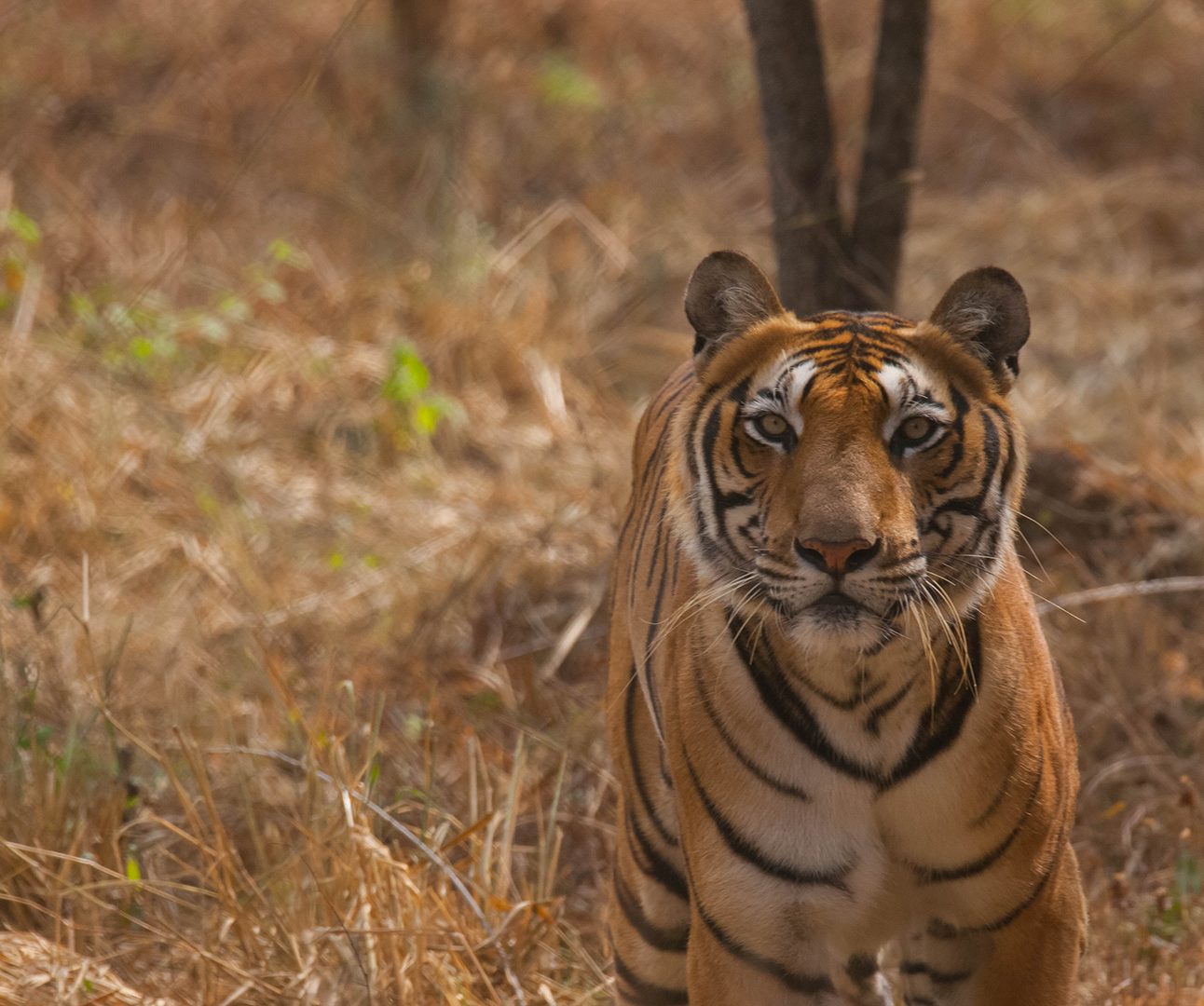
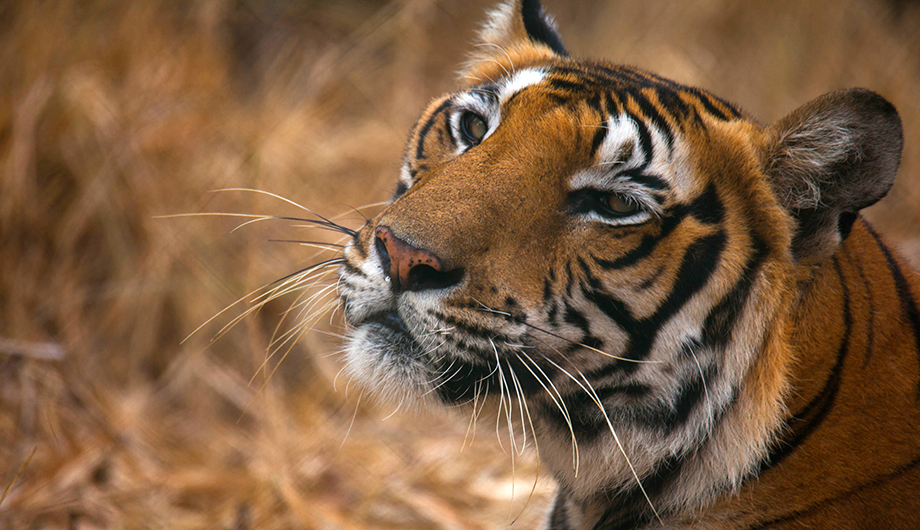
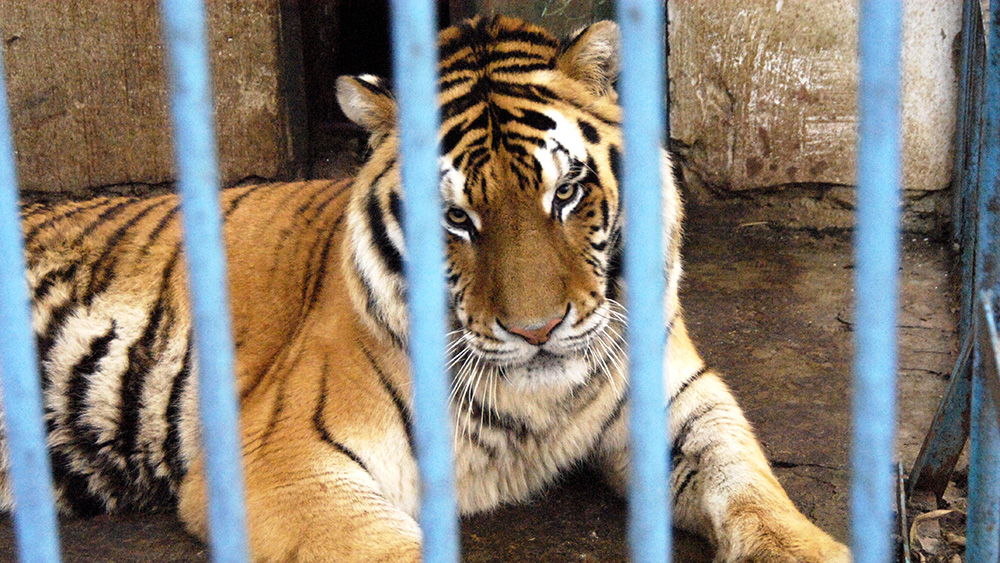
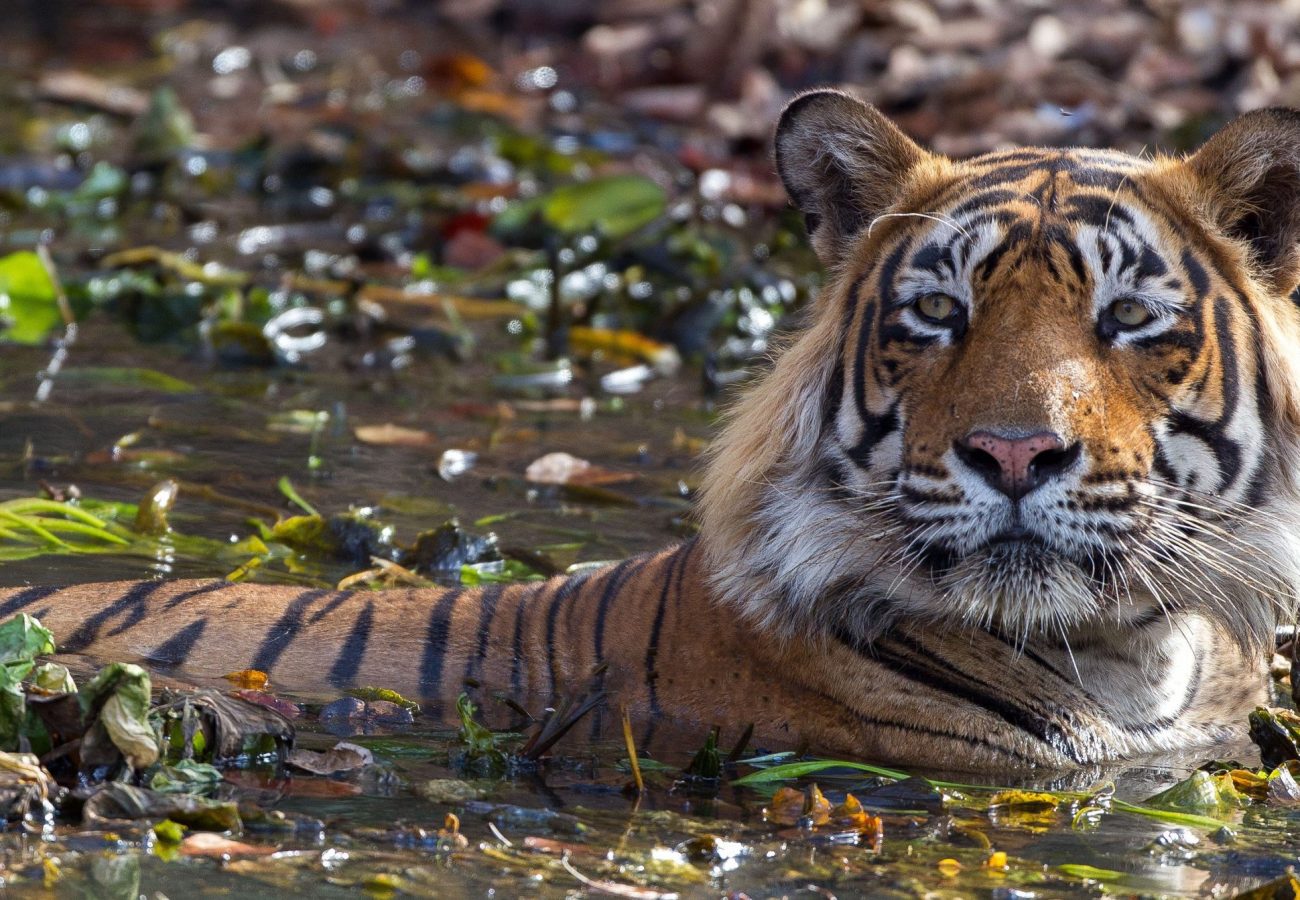
You can help Born Free provide lifetime care for Gopal and other rescued tigers, at our sanctuary in India, as well as protect tigers in the wild when you adopt a tiger today.